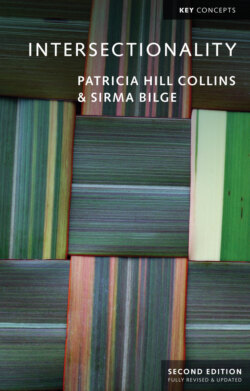Читать книгу Intersectionality - Patricia Hill Collins - Страница 14
Notes
Оглавление1 1. FIFA’s legal troubles aside, the business of the World Cup goes far beyond the games themselves. Rather, as the scope of people who were indicted indicates, the World Cup is situated at the convergence of increasingly important global industries: sports and entertainment, global telecommunications and tourism, and the globalized World Cup paraphernalia industry. For example, the FIFA-approved official ball of the 2014 World Cup, Adidas Brazuca, with a price tag of US$160, was manufactured in the Forward Sports factory at Sialkot (Pakistan) by Pakistani women (90 percent of the workforce) who each made barely US$100 per month. After selling 13 million official World Cup match balls in 2010, Adidas made hundreds of millions of dollars.
2 2. In one case, Polish fans threw bananas at a Nigerian football player. The fans aren’t the only problem – racial slurs among players are also an issue. For example, at the 2006 World Cup, France’s Zinedine Zidane, a three-time winner of FIFA’s world player of the year award, violated a rule of fair play by headbutting Italy’s Marco Materazzi in the chest. Zidane, the son of Algerian immigrants, reported he was goaded by Materazzi’s racist and sexist slurs against his mother and sister. Materazzi was kept in play while Zidane was ejected from what was to be his last ever World Cup match.
3 3. Despite the 2008 global financial crisis, by 2014 the richest 1 percent had increased its share of the world’s wealth – from 44 percent in 2009 to 48 percent in 2014. In the US, the wealthiest 1 percent captured 95 percent of post-financial crisis growth after 2009, while the remaining 90 percent became poorer. In 2013, the combined wealth of the world’s richest 85 people equaled the total wealth of the poorest half of the world’s population, which accounted for 3.5 billion people (Oxfam 2014). More recently, these trends have shown no evidence of abating. By 2018, the wealth of the world’s billionaires increased by $900 billion, an increase of $2.5 billion each day. In contrast, progress made in fighting extreme poverty, which is defined by the World Bank as an income of $1.90 per person per day, slowed down (Oxfam 2019).
4 4. In 2015, the median wealth (assets minus debts) of white households was 20 times that of black households and 18 times that of Hispanic households.
5 5. Black women fare worst according to a 2010 research report on wealth disparities between different racial groups in the US. Median wealth of single black women (including household-head single mothers) in the prime of their working years (ages 36 to 49) is only US$5, compared to US$42,600 for single white women of the same age – which is 61 percent of their single white male counterparts (Chang 2010).
